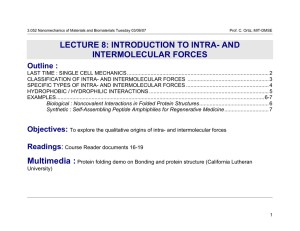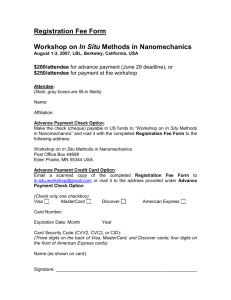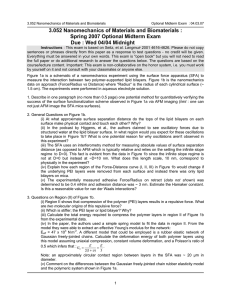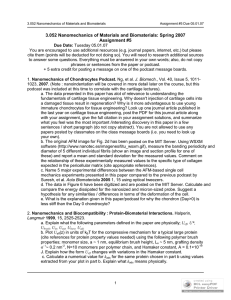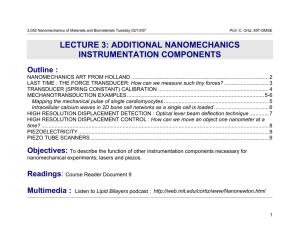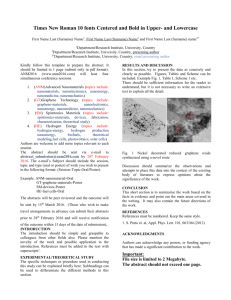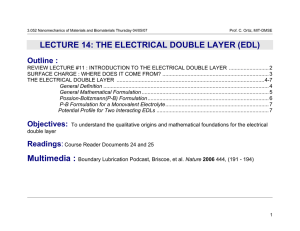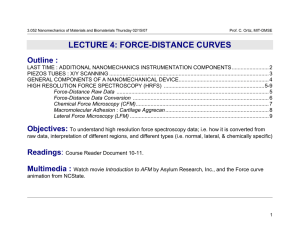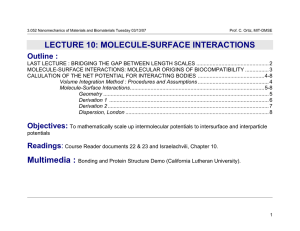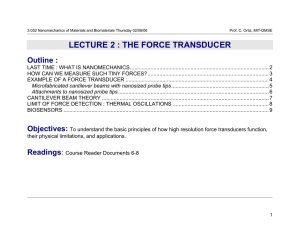3.052 Nanomechanics of Materials and Biomaterials : Spring 2007
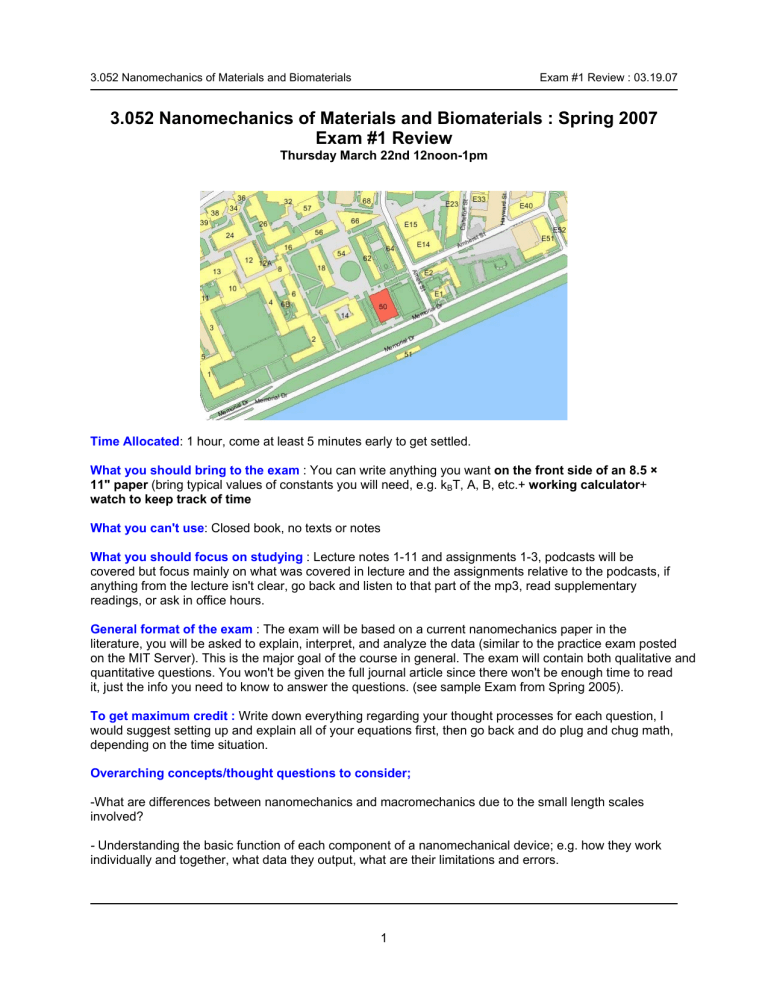
3.052 Nanomechanics of Materials and Biomaterials Exam #1 Review : 03.19.07
3.052 Nanomechanics of Materials and Biomaterials : Spring 2007
Exam #1 Review
Thursday March 22nd 12noon-1pm
Time Allocated : 1 hour, come at least 5 minutes early to get settled.
What you should bring to the exam : You can write anything you want on the front side of an 8.5 ×
11" paper (bring typical values of constants you will need, e.g. k
B
T, A, B, etc.+ working calculator + watch to keep track of time
What you can't use : Closed book, no texts or notes
What you should focus on studying : Lecture notes 1-11 and assignments 1-3, podcasts will be covered but focus mainly on what was covered in lecture and the assignments relative to the podcasts, if anything from the lecture isn't clear, go back and listen to that part of the mp3, read supplementary readings, or ask in office hours.
General format of the exam : The exam will be based on a current nanomechanics paper in the literature, you will be asked to explain, interpret, and analyze the data (similar to the practice exam posted on the MIT Server). This is the major goal of the course in general. The exam will contain both qualitative and quantitative questions. You won't be given the full journal article since there won't be enough time to read it, just the info you need to know to answer the questions. (see sample Exam from Spring 2005).
To get maximum credit : Write down everything regarding your thought processes for each question, I would suggest setting up and explain all of your equations first, then go back and do plug and chug math, depending on the time situation.
Overarching concepts/thought questions to consider;
-What are differences between nanomechanics and macromechanics due to the small length scales involved?
Understanding the basic function of each component of a nanomechanical device; e.g. how they work individually and together, what data they output, what are their limitations and errors.
1
3.052 Nanomechanics of Materials and Biomaterials Exam #1 Review : 03.19.07
-High resolution force spectroscopy or surface forces measurement; understanding the raw data conversion, the meaning different shaped curves (attractive and repulsive regimes) based on the system of interest, the different regions of the curves, in particular you want to try to tie together the lectures on intra- and intermolecular forces with different shapes of force-distance curves to explain their origin physically, what material properties/ physical parameters can be extracted from force vs. distance curves, understanding and quantifying adhesion
-Surface functionalization; for any nanomechanics experiment the authors will present a surface functionalization scheme if they want to interrogate certain molecules (e.g. remember the two schemes presented in the heparain biosensors podcast asked on pset #3). This is a very dicey situation in many cases; you want to be able to pinpoint the problem areas in a particular surface functionalization scheme based on your knowledge the experimental setup and in general, on intra- and intermolecular forces, etc.
-AFM Imaging; understanding how various images are produced, the different modes of operation, artifacts, being able to interpret various AFM images qualitatively and quantitatively
-Single cell mechanics; understanding the basic state of the art in continuum level modeling, its advantages and limitations, mathematical manipulations of rubber elasticity equations
-Understanding and manipulating intra- and intermolecular potentials and interparticle and intersurface potentials mathematically
- understanding the meaning of the parameters in the prefactors and how they affect the potentials
-what are the major differences between intra and intermolecular forces and interparticle and intersurface forces
-knowing what terms to use in the net potential (both attractive and repulsive)
-how to calculate relevant energies, forces, and distances (e.g. equilibrium bond distance) from the prefactors (Lecture 9, slide 4 we reviewed these for LJ potential, 3.032)
2
